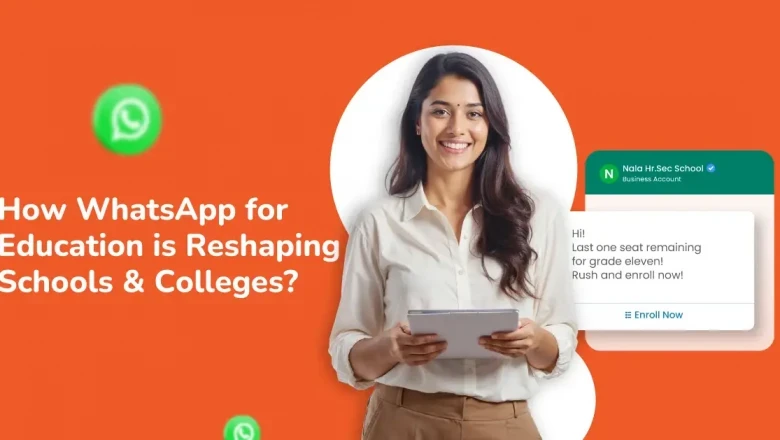views
In the digital age, technology has become an indispensable part of education. Among the tools transforming the educational landscape, WhatsApp for Education has emerged as a revolutionary platform. With its simplicity, accessibility, and wide reach, WhatsApp is bridging gaps in communication, fostering collaboration, and enabling personalized learning experiences.
Why WhatsApp for Education?
WhatsApp is more than just a messaging app. Its diverse functionalities make it an ideal tool for educational purposes:
-
Instant Communication: Facilitates real-time interaction between teachers, students, and parents.
-
Ease of Use: Intuitive interface ensures adoption across different age groups.
-
Accessibility: Works on various devices and networks, making it accessible to a broad audience.
-
Cost-Effective: Minimal data usage and no subscription fees make it economical.
-
Multimedia Sharing: Supports sharing of images, videos, documents, and links, enriching the learning experience.
Transforming Traditional Classrooms
1. Enhanced Teacher-Student Interaction
Teachers can use WhatsApp to:
-
Share assignments, study materials, and resources instantly.
-
Provide quick feedback on students' work.
-
Answer queries outside class hours, fostering a supportive learning environment.
2. Collaborative Learning
Group chats enable:
-
Peer-to-peer learning through discussions and idea exchanges.
-
Collaborative projects where students can brainstorm and contribute remotely.
3. Parental Engagement
Schools can:
-
Keep parents informed about academic progress and school activities.
-
Share updates, notices, and event schedules conveniently.
WhatsApp in Remote and Hybrid Learning
As education shifts to hybrid and remote models, WhatsApp has proven to be an indispensable tool:
-
Virtual Classrooms: Teachers can conduct lessons through WhatsApp groups or video calls, ensuring continuity in learning.
-
Assignments and Assessments: Students can submit assignments and take quizzes via WhatsApp, simplifying the evaluation process.
-
Resource Sharing: Links to online resources, e-books, and tutorials can be shared seamlessly.
WhatsApp Chatbots in Education
The integration of chatbots with WhatsApp is taking educational efficiency to new heights:
-
Automated Queries: Chatbots can answer frequently asked questions about admissions, fees, and schedules.
-
Enrollment Processes: Simplifies enrollment by guiding students through application procedures.
-
Personalized Learning: AI-driven chatbots can recommend resources based on individual learning preferences.
Real-World Applications
1. Language Learning
WhatsApp groups facilitate:
-
Daily vocabulary lessons.
-
Real-time practice sessions with native speakers.
2. STEM Education
-
Teachers can share experiments, coding tutorials, and problem-solving exercises.
-
Students can collaborate on STEM projects.
3. Exam Preparation
-
Group chats for doubt clearing and resource sharing.
-
Mock tests and quiz sessions for practice.
Advantages of WhatsApp for Education
-
Improved Engagement: Encourages active participation and continuous learning.
-
Time Efficiency: Instant updates save time for teachers and administrators.
-
Flexibility: Learning can happen anytime, anywhere.
-
Inclusivity: Ensures equal access to learning resources for students from diverse backgrounds.
Challenges and Solutions
1. Distraction Risks
Solution: Establish clear guidelines for usage and monitor group activities.
2. Privacy Concerns
Solution: Use broadcast lists for one-way communication and ensure compliance with data protection policies.
3. Overload of Information
Solution: Organize content and schedule messages to avoid overwhelming students.
The Future of WhatsApp in Education
With continuous innovation, WhatsApp’s role in education is poised to grow:
-
AI Integration: Enhanced chatbot capabilities for personalized learning.
-
Interactive Content: AR and VR-enabled educational content shared via WhatsApp.
-
Data-Driven Insights: Analytics to track student engagement and progress.
Conclusion
From classrooms to smartphones, WhatsApp is redefining education by making it more interactive, inclusive, and accessible. Its versatility ensures that it caters to the diverse needs of students, teachers, and parents alike. As educational institutions embrace technology, WhatsApp for Education stands out as a powerful tool to enrich learning experiences and foster academic success.






















Comments
0 comment